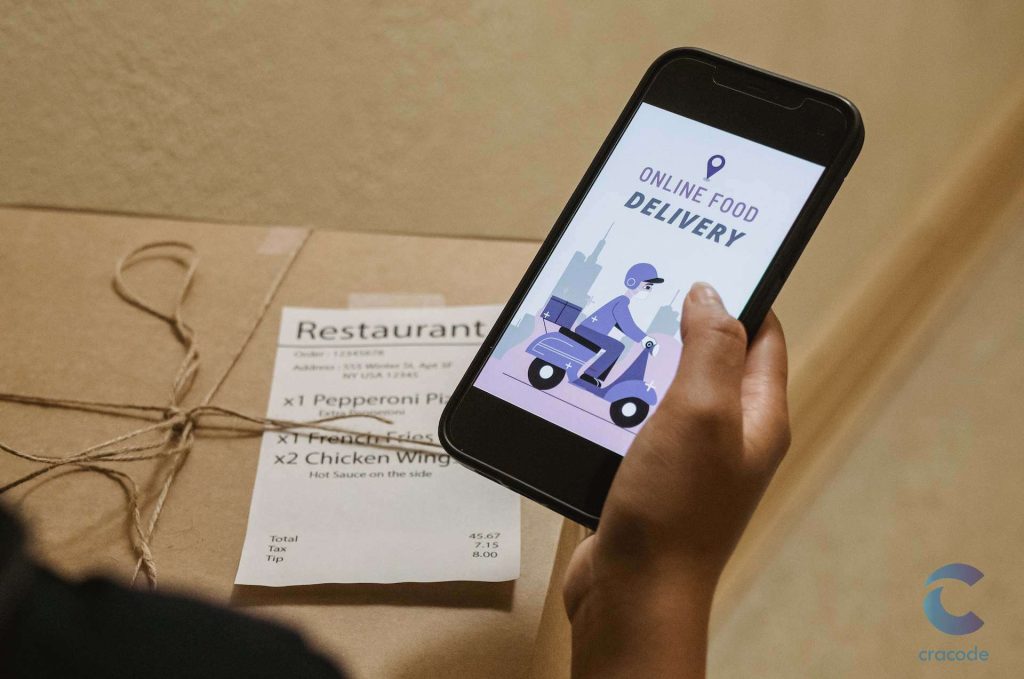In recent years, the rise of online tools has revolutionized the way we live our lives. From ordering takeout to scheduling appointments, these apps provide us with convenient services that make our lives easier. But on-demand services apps are also having a major impact on the advertising industry.
Brands are increasingly relying on these apps to reach customers as more people turn to them for delivery of their needs. We will explore the factors and commercials associated with delivery of goods on demand in this blog post.
What are On-Demand Apps?
Online tools are a form of mobile software that allows users to instantly access services or goods with a few taps on their smartphone.
Postmates, Instacart, and Uber are some examples. People order food, find transportation, shop groceries, and book vacation rentals using these apps because they provide convenience and flexibility.
Through these apps, businesses can advertise their services in creative ways and appeal to a wider audience. By utilizing these tools, companies can increase customer engagement and reach potential customers more effectively. On-demand delivery apps have revolutionized advertising, making it easier for businesses to promote their products and services.

On-Demand Apps Have Many Advantages
On-demand apps are changing the face of advertising. This new technology offers a plethora of advantages that businesses can benefit from.
From targeted ads to detailed customer data, On demand services apps make it easier for companies to market their products and services more effectively. Furthermore, On demand delivery apps provide a platform for businesses to gain more exposure, reaching customers that may not have otherwise been reached.
Moreover, these apps allow companies to personalize their ads and make them more relevant to their customers. Additionally, On demand services provide real-time analytics so businesses can track the effectiveness of their campaigns and adjust them accordingly.
On-Demand Apps: Disadvantages
While on-demand apps have revolutionized the way people get their goods and services, there are some potential downsides associated with them. One of the most significant issues is the potential for price gouging. With demand for certain services increasing, providers may take advantage of this by raising their prices drastically. This could make it difficult for those who can’t afford to pay the higher costs.
In addition, there is also the potential for data misuse. Companies that offer on-demand services often collect personal data from users. They may use this data for targeted advertising or develop profiles of individuals, which could put them at risk of identity theft or other forms of fraud. Users need to read the terms and conditions of the app they are using before they share any personal information.
On-Demand Apps: Technology stack
The technology stack that powers On demand delivery apps are incredibly sophisticated and complex. From databases and server infrastructure to APIs and front-end design, a wide range of elements are necessary for an app to function as desired.
To create a successful On demand services apps, developers must consider several factors such as scalability, security, and performance, as well as ensure its reliability. Additionally, the right technology stack should make it easier for developers to access data quickly and accurately and enable them to respond quickly to customer demands.
Businesses can ensure that their on-demand app is reliable and efficient by investing in the right technology stack, resulting in a better customer experience.
Documentation
The success of On demand delivery apps has revolutionized the way businesses promote and advertise their products and services. On demand services apps are great tools for both businesses and consumers, as they allow for fast, convenient access to goods and services. Companies can reach new customers, increase sales, and gain market share by leveraging the power of on-demand applications. As more businesses adopt this technology, it is becoming increasingly important for companies to understand the different factors and commercials associated with On demand delivery apps.
To make sure a business maximizes its advertising budget, it must consider cost per click, user engagement rates, and audience targeting. Additionally, businesses should look at different commercial models such as CPM (cost per thousand impressions), CPC (cost per click), and CPA (cost per action). Understanding how these models work will help businesses create effective and efficient campaigns that target their desired audience.
Staring Through MVP App
The development of a Minimum Viable Product (MVP) app is essential for any company looking to make its mark in the on-demand industry. MVP On demand services apps are designed to identify potential factors and commercials associated with On demand delivery apps, enabling companies to measure user engagement and performance.
With an MVP app, companies can identify key features, test usability, and track user feedback. By investing in an MVP app, businesses can gain invaluable insight into the success of their On demand services apps, ultimately helping them to succeed in the future.
Commercials associated
Advertising is key to any successful business, and delivery tools are the most effective platform to take advantage of the world of digital advertising. Online services and apps offer the opportunity to reach an even larger audience than traditional commercials. This is because they provide access to a variety of platforms including social media, websites, and more.
Moreover, due to their popularity, online tools have the potential to reach far more people than traditional commercials, resulting in greater brand visibility and a larger potential customer base.
Delivery tools are ideal for targeting specific demographics or geographical areas, allowing businesses to tailor their advertisements accordingly. The cost of advertising on Online services apps is generally lower than that of traditional commercials. So they can be a cost-effective method of reaching your target market. All these factors make On demand delivery apps the perfect platform for advertisers looking to capitalize on the digital world.
Promotion through Digital Marketing
Online tools offer a creative and innovative way to reach potential customers. By utilizing digital marketing techniques, businesses can target specific demographics and uniquely promote their services.
This includes everything from email campaigns and social media ads to influencer marketing and search engine optimization. With the right strategy, online services can be used to effectively advertise your business, increase sales, and build customer loyalty.
Conclusion
Digital applications have revolutionized the way businesses engage with their customers, and their impact on advertising is undeniable. In this blog post, we will explore the various factors and commercials associated with OTT applications. These factors and commercials make them so attractive to businesses looking to advertise their products or services. We will discuss the potential of app-based delivery services to help businesses reach a larger audience. We will also discuss the benefits of using them as part of an effective marketing strategy. By the end of the post, you should have a better understanding of why online services are the future of advertising.



